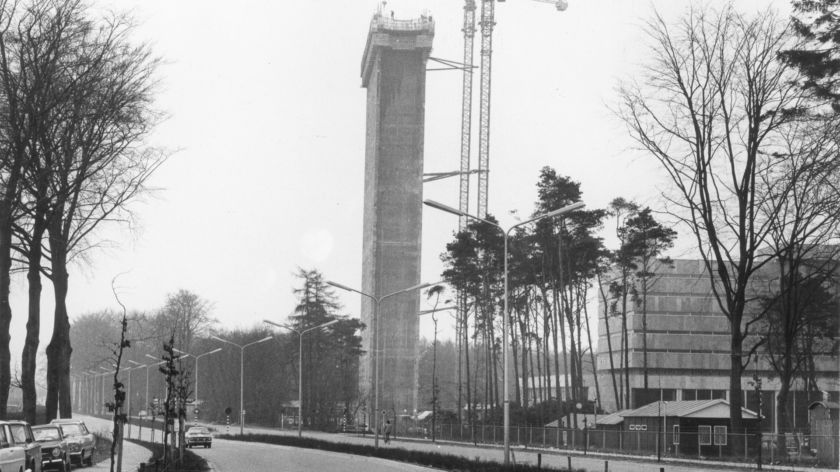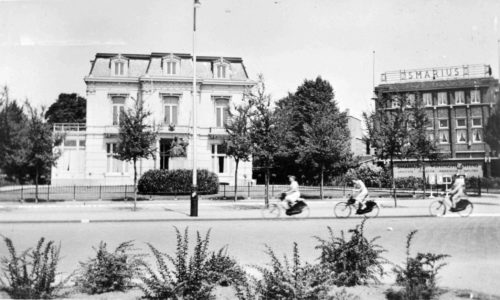Photo series Then & Now (2): The Erasmus building in 1971
-
 foto: KDC/Jan van Teeffelen
foto: KDC/Jan van Teeffelen
Back in the day, the university did not have a campus. Instead, its education buildings were spread out across the city. In honour of Radboud University’s 95th anniversary, Vox is exploring the image archives to learn more about its history. What has changed? Today’s subject: the Erasmus building.
Speaking of history: you can’t miss the Erasmus building when you look at our campus through a historical lens. With its 88,1 meter height, it is the highest building in Nijmegen – and it is visible from far and wide. It is an ideal signboard, so it makes sense that the tower has often been used by students to communicate their political message.
First stone
In the spring of 1971, the Erasmus building’s first stone was placed. The reason for the build was practical. The existing infrastructure of the humanities faculties, in the city centre, did not suffice at all. On top of that, the university grew at a fast pace: in the sixties, the number of students attending the university increased from 3.000 to 11.000. A new building was the best option and the former estate Heyendael, where the science and medical faculties were already located, was a sensible choice. The last signatures on the building permits came just in time, because a few weeks later, the minister for education, Mauk de Brauw issued a building stop for all university campuses.
But the Erasmus building arose anyway, completely in the period’s building style. Functionalism was the architectural creed – high buildings without unnecessary frivolities and decorations. The local residents dit not get a lot of time to get used to their new view. In only five weeks, the form of the Erasmus building was erected. Two years later, on the 15th of July 1973, the building came into operation.
Occupation
In the beginning, there was a lot of dissatisfaction about the new building. The building dealt with climatic problems, the building – according to students – was a symbol for authoritarian scientists in their ivory tower, and according to a lot of people, it ruined their view. The unrest showed itself by the cynical nickname ‘horizon polluter’. Eventually, the university chose the name of humanist Desiderius Erasmus (1469-1536) to give the building its name.
In May 1974, during the official opening, around four hundred students engaged in a protest, which formed a barricade so that state secretary Ger Klein and a number of other invitees could not enter the building. A short time before that, the building had already been occupied twice, and during the following decades, the Erasmus building was occupied multiple times to give strength to political demands and demonstrations: in 1980, 1983, 1985, 1990 and in 2011. Partially because of that, the building is of great importance for the history of the Nijmegen university campus.
With thanks to Jan Brabers, university historian. Marjolein van Diejen took the ‘now’ photos.
Source: Vox Magazine, 15 December 2014

